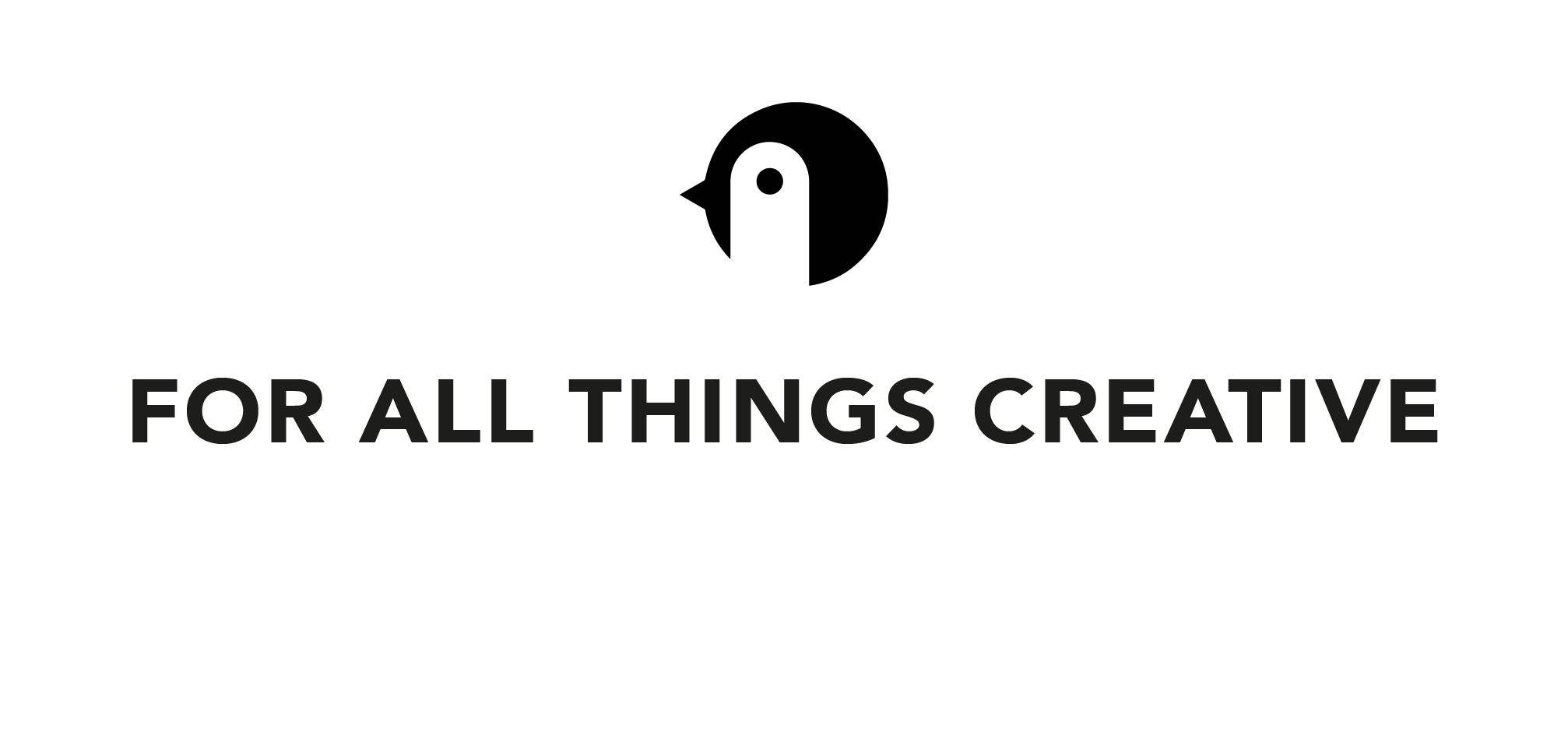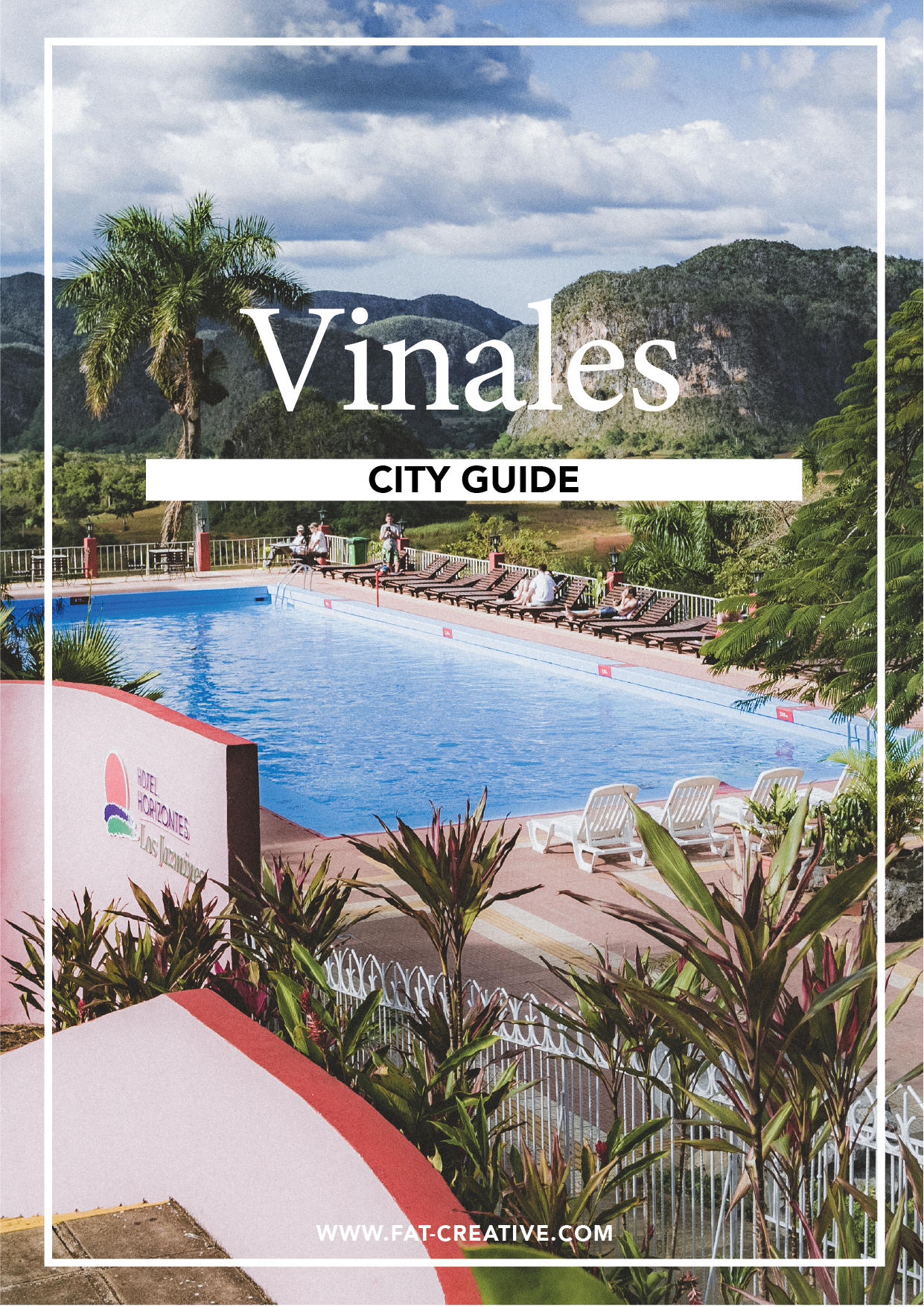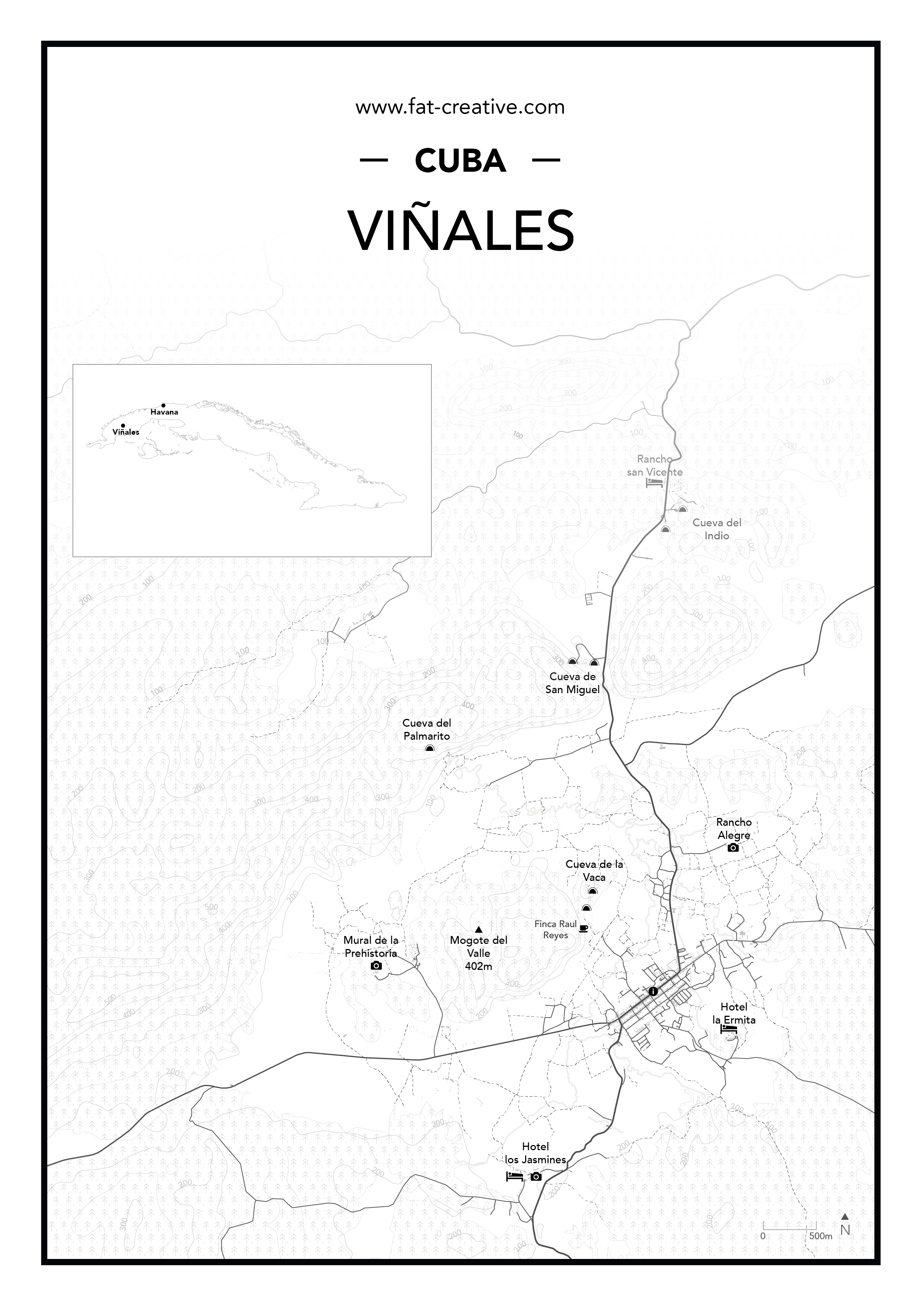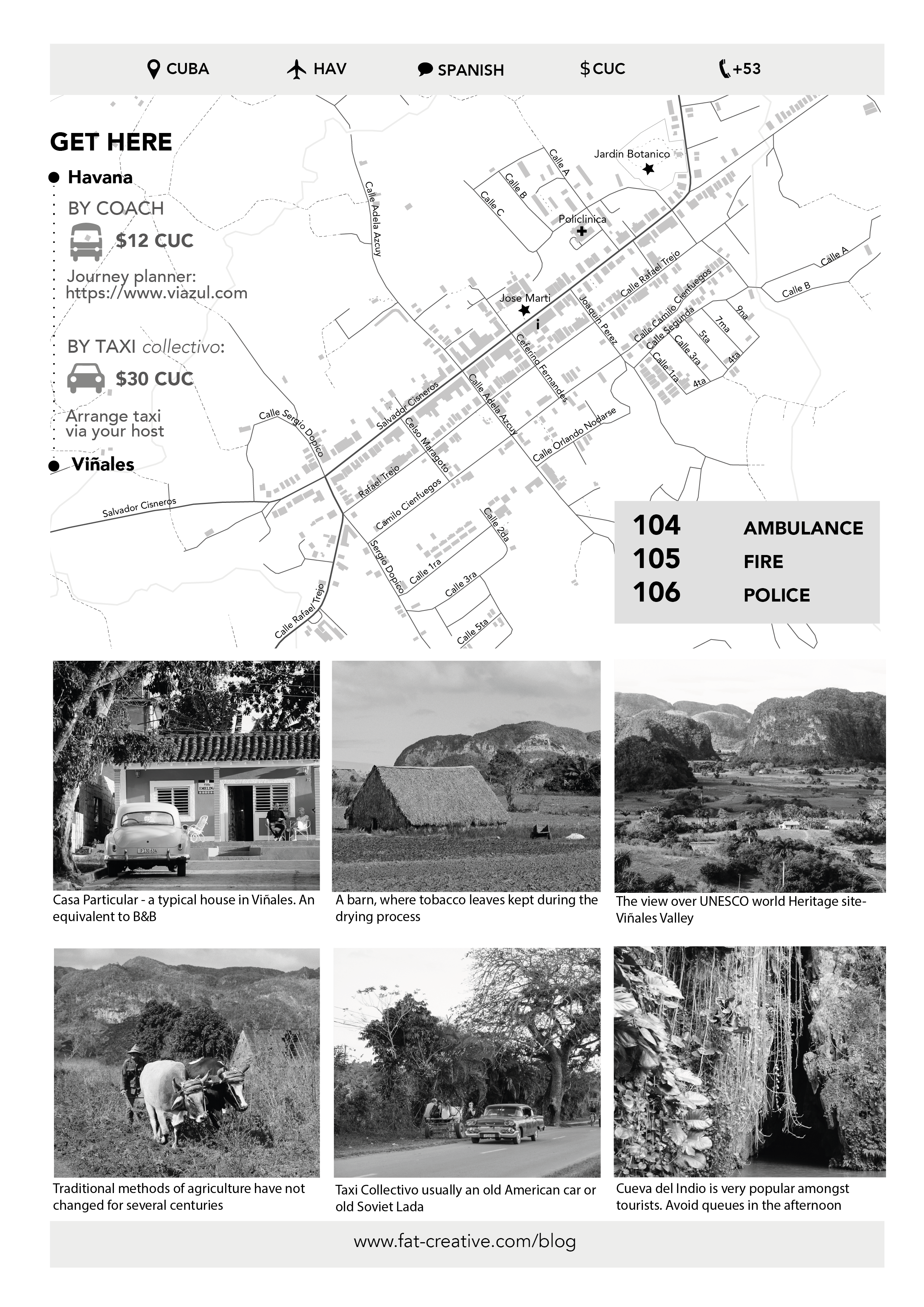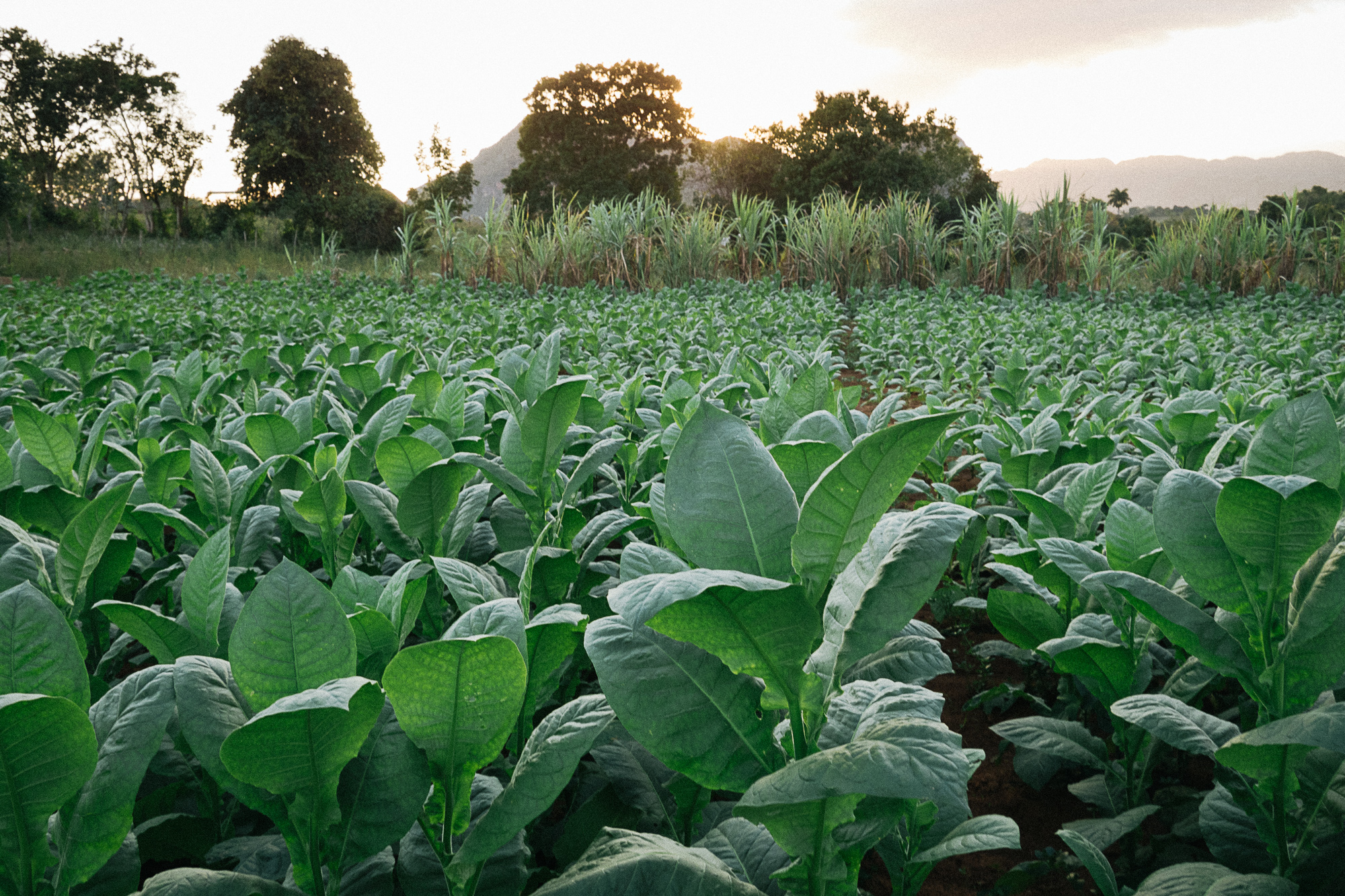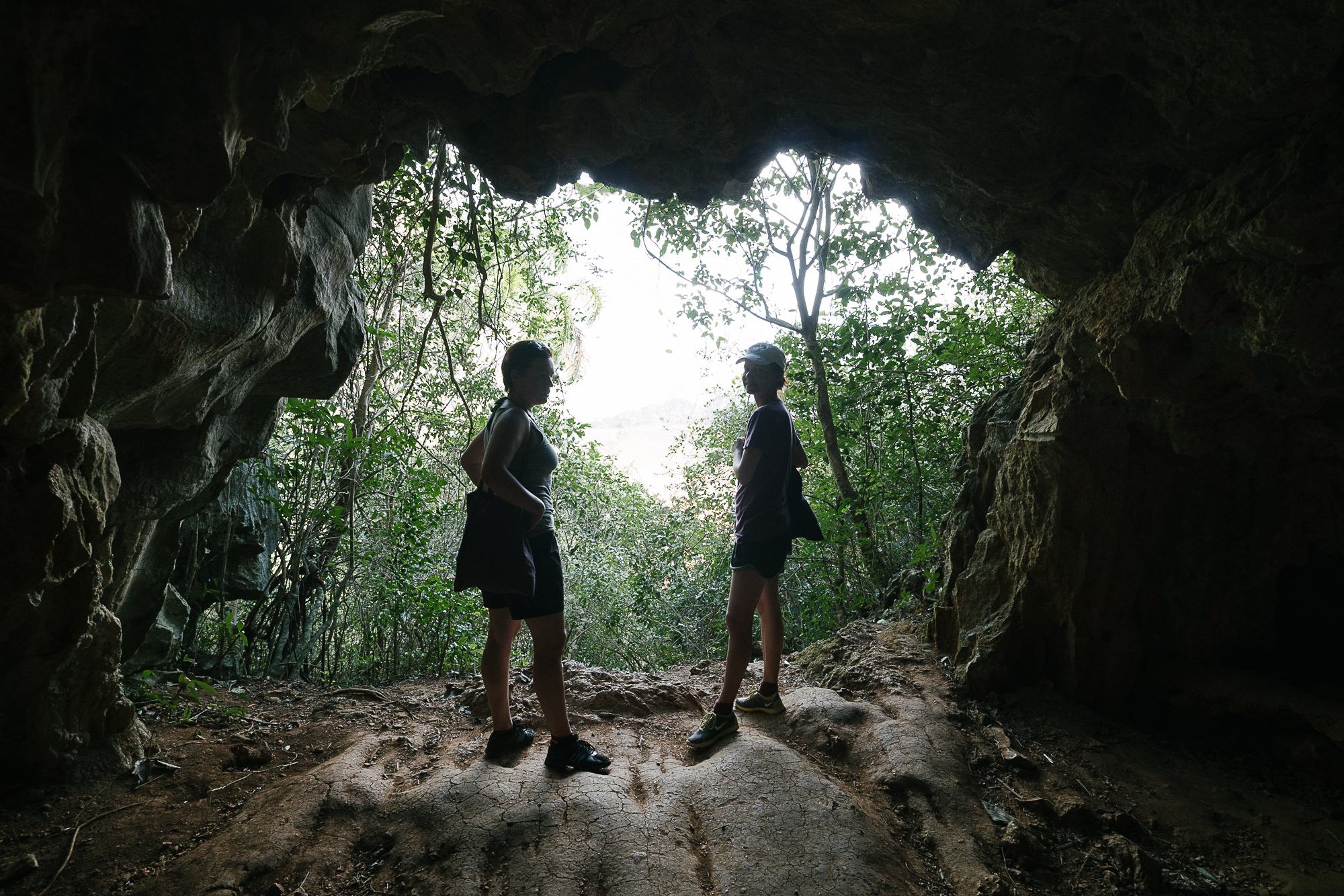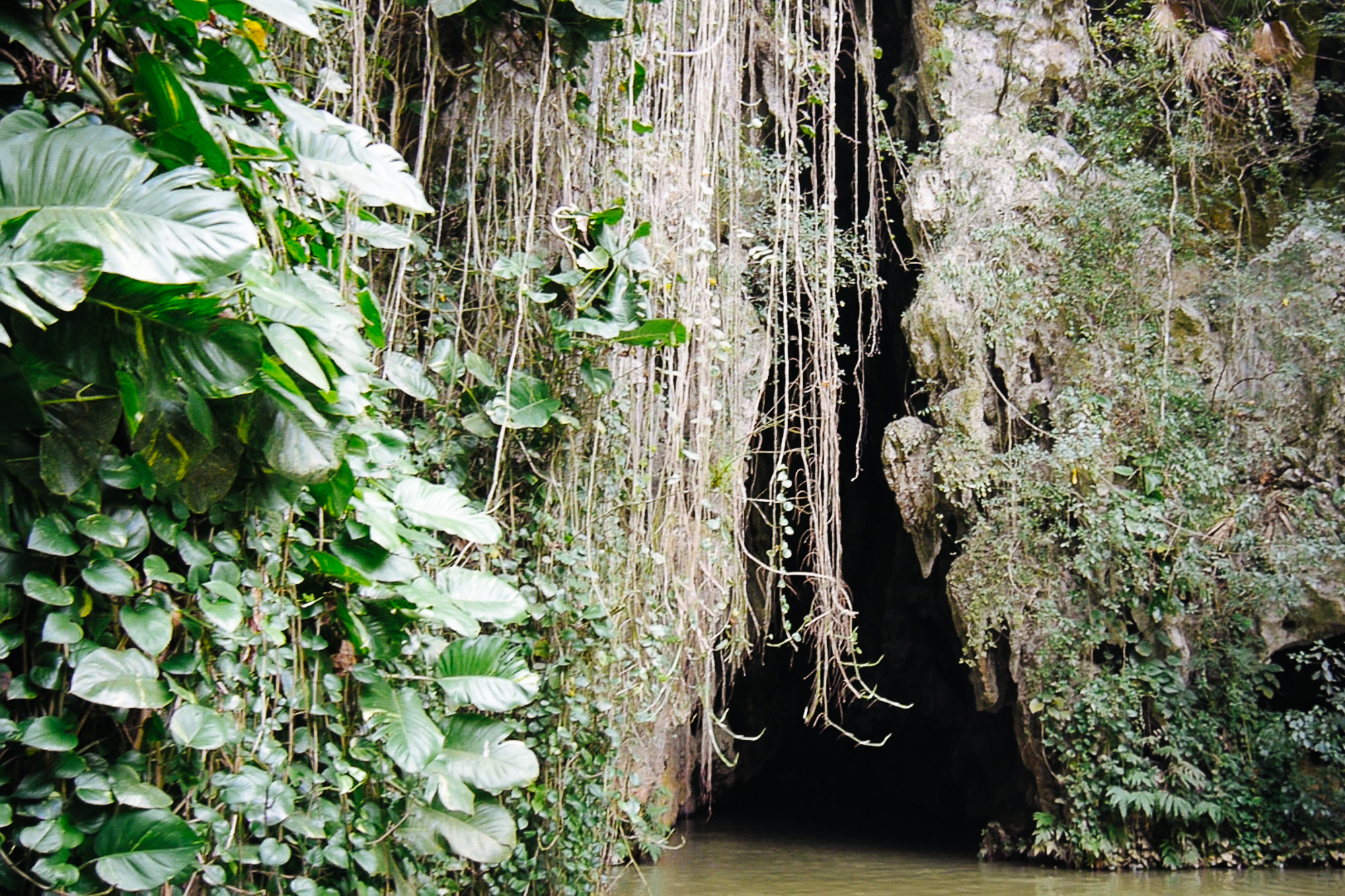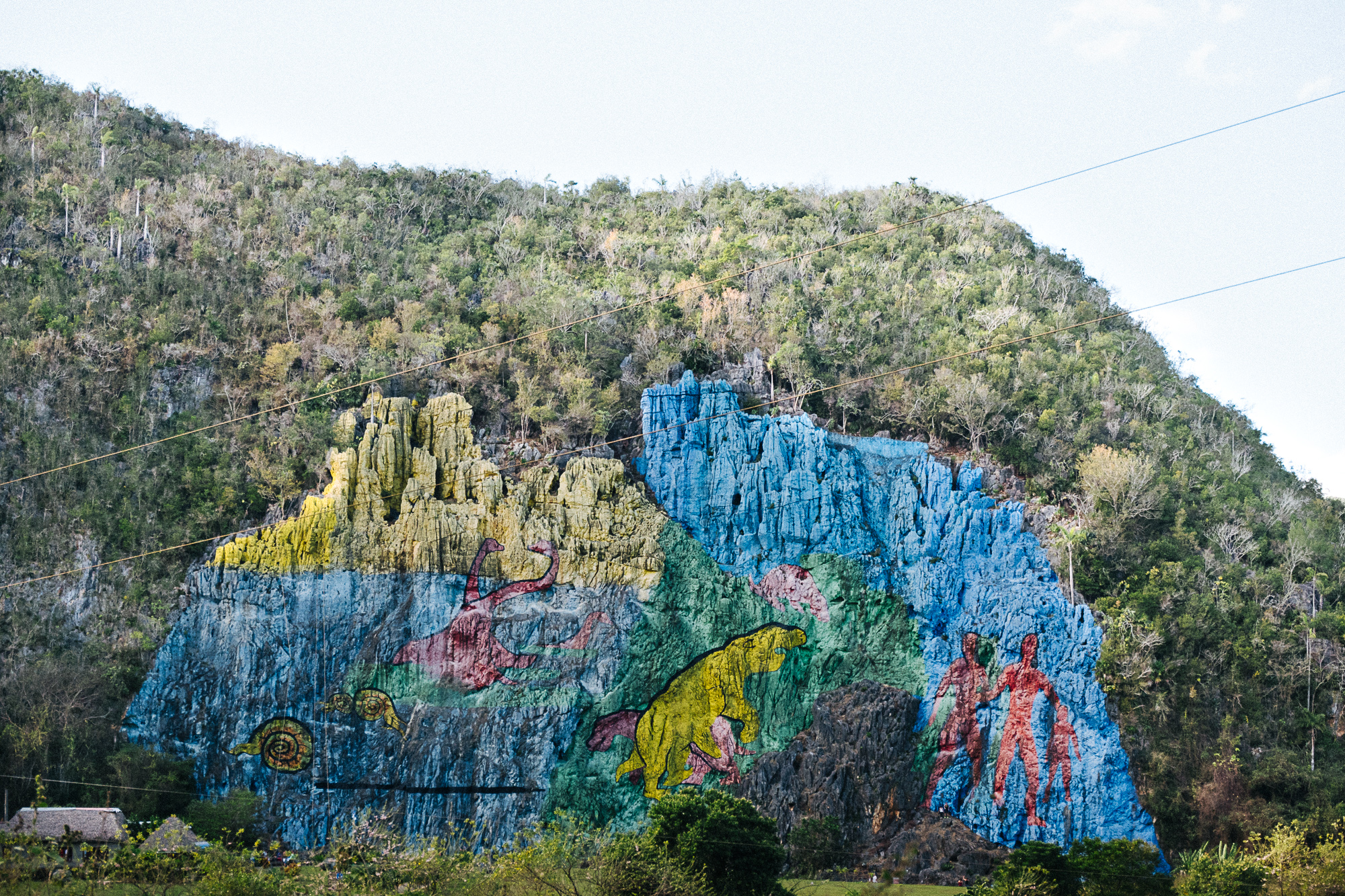7 places you should visit in Viñales, Cuba + FREE Travel Guide
Local farmer shares the process of making the authentic Cuban cigar
FREE DOWNLOAD: A DETAILED POSTER-MAP WITH TRAVEL TIPS TO VIÑALES
To be honest, I’ve never heard of Viñales before I travelled to Cuba. It turns out to be one of the most popular places to visit amongst tourists. One day is enough to see everything it’s got to offer. Viñales is a small rural village 2,5 hours’ drive away from Havana by car or a bus. We've spent 2 full days exploring Viñales and here are our highlights from this trip.
#SayOutLoud
Viñales [ vin-ya-les ]
CUBAN CIGARS
The birthplace of Cuban cigars is in Viñales. We've discovered that the tobacco crops are grown in Viñales for many centuries and the original traditional methods are still in use today. In fact, Viñales is a UNESCO World Heritage site, protecting the authentic agriculture. Tourists can visit tobacco farms and learn more about the process of producing the tobacco leaves.
VIÑALES VALLEY
The Valley is so beautiful that it's been categorised as a National Natural Monument by UNESCO. The dramatic landscapes are shaped by the tall mountains with rounded tops that rise abruptly from the flat valley. It is indeed the most mesmerising and unique scenery. The mountains have many caves and it’s possible to explore most of them.
N 22.61°/ W 83.70°
Viñales Valley a UNESCO World Heritage site
Taxi Collectivo usually an old American car or old Soviet Lada
HOW TO GET HERE
BY BUS
Viñales is two and a half hours away from Havana by car or a bus. The regular bus services run every day from the capital and you must book tickets in advance (especially in high season) and arrive at the bus station at least 40 minutes before departure in order not to lose your spot. Expect to pay around 12CUC/12USD for a ticket. When we travelled in January all bus tickets were sold out few weeks before our arrival to Cuba, so we had to use the ‘taxi collectivo’ services.
TAXI COLLECTIVO
Basically, you share the taxi with other passengers. Usually ‘taxi collectivo’ are old American cars that fit seven passengers plus the driver, the car is spacious and it is a rather nice ride. Old Soviet Lada fits up to five people in total and a bit tighter as it is a smaller car. Our host helped us to book a ‘taxi collectivo’ the day before our trip to Viñales. You’ll come across a lot of taxi drivers on the streets of Havana that will offer services too. When you make a booking with a driver they ask your apartment address, as that’s where you’ll be picked up on the agreed day and time. Upon arrival to Viñales the taxi driver takes you directly to your apartment/hotel, which is very convenient. Expect to pay around 30CUC/30USD per person.
The average daytime temperature during the dry season is 24º-27ºC
WHEN TO GO
JANUARY & FEBRUARY
There are only two seasons in Cuba to consider when planning a trip: the dry season (NOV-APR) and the wet season (MAY-OCT).The weather during the dry season is consistently sunny, with daytime temperature averaging between 24º-27ºC (75º-80ºF), however, the temperature can quickly drop and it can actually get somewhat chilly with cold northern winds, particularly in January and February. But remember that it’s a tropical climate, so temperatures don’t drop below 17C. During the wet season, the risk of hurricanes is very high but overall a slightly warmer period in Cuba, with less dramatic same-day temperature changes.
A barn, where tobacco leaves kept during the drying process
TOBACCO FARM
This is a fantastic opportunity to learn more about the process of growing, cultivating, drying and fermenting the tobacco leaves - all the things the Cuban farmers do in order to create the exquisite taste of the world-famous cigars. We've visited the Rancho Alegre tobacco farm as part of our private guided tour around Viñales. A local farmer showed us around his farm and talked through the craft of cultivating the tobacco leaves. We've also learned that the tobacco leaves have to go through the fermentation process before it folds into the cigar. The government factories use chemicals during the fermentation stage, where the farmers use only organic products and every family has a secret recipe. Fermentation is the stage in the process where the tobacco leaves are sprayed with the mixture of ingredients - a cocktail, somewhat similar to the mojito. The main ingredients are: rum, honey, lime, water and then they add an orange leaf, coffee, guava, vanilla and the cacao. it's remarkable to even think how much care, craft and many manual hours the process involves creating the distinguished taste of a Cuban cigar. Then the cigars are rolled with three different type of leaves- that process determines the strengh and smoothness of the cigar.
No wonder why the Cuban cigars are the best in the world.
All farmers sell 90% of produced raw tobacco leaves to the government. The remaining 10% stays with the farmer to consume and to sell to the farm visitors. The farmer's cigars don't have a brand, they usually sell them in a pack of 10, wrapped in a palm leave. The prices might vary at different farms, depending on the size and strength of the cigar. At Rancho Alegre, we bought a medium set for 40CUC/40USD and at Finca Raul Reyes a set of small cigars for 10CUC/10USD (both farms are marked on the map, see above)
ARCHITECTURE
Viñales Valley has managed to keep the authenticity in terms of location and setting, forms, designs and materials in its uses, functions and traditions. The town has a vivid character despite the increased flow of tourists.
Most of the buildings built of local and natural materials and used as homes or family farms. The village of Viñales, strung out along its main street Salvador Cisneros, has retained its original layout and many interesting examples of colonial architecture, mostly one-storey wooden houses with porches. The valley is home to an original culture, a synthesis of contributions from indigenous peoples, Spanish conquerors and African slaves who once worked the tobacco plantations.
HIKING
That’s where my map could be particularly handy because it illustrates the paths (dotted lines on the map) in the Valley you don’t see on Google maps.
We’ve hiked to Cueva del Palmarita (see on the map) starting in the centre of Viñales, one block away from the main square Jose Marti. We simply followed the road Calle Adela Azcuy until we approached the Finca Raul Reyes (see on the map)- a very nice relaxing bar offering local cigars and refreshments. Then you can either walk around the Mogote or hike up to Cueva de la Vaca, a tiny cave (that’ what we did). Beware It’s a steep hike with many steps.
Once you’ve passed the cave you’ll be walking along the valley across farmer’s land. There are no trees to hide from the sun and no bars/cafes to stop for refreshment so make sure you have a hat, a long sleeve shirt and water with you, as it’ll take you a couple of hours to cross the valley under the clear skies with the sun in full mode! Make sure you save some water for walking back.
Cueva del Palmarito
Cueva del Palmarito is a quite deep cave, so to have a torch is not a bad idea or you can rent one for a couple of CUC from the locals. Although a lot of tourists visit this cave, it’s not maintained for tourists (unlike the Cueva del Indio) and there is a natural pool at the end of it where you can swim, but remember it’s pitch black out there and the water is cold. After the Cueva del Palmarito some people choose to follow a path to see Mural de la Prehistoria, but I’d suggest to either come back to Finca Raul Reyes for a swing on a hammock with the few Coco Loca cocktails (your tired feet will be pleased) or continue the hike to Cueva de San Miguel - there is a bar in the cave and later in the evening it turns into a club.
A private tour around Viñales in style
HOW TO BOOK A TOUR AROUND VINALES
At INFOTOUR- a tourist information service operated under the Ministry of Tourism of the Republic of Cuba (marked ‘i’ on the map) - that’s where we booked our tour around Viñales. We picked a tour in the afternoon to explore the main cultural spots of Viñales with a local guide. We’ve agreed with the tour organisers that the guide Doribel Hernandez, a former English professor, will pick us up at our apartment. He was half an hour late (by the way, punctuality is not a thing in Cuba) and made us a little nervous, but little did we know that he will arrive in style- in an old American cabriolet.
£35CUC/35USD for the tour per person included
a lunch at the family-owned restaurant (a relatively new business in Cuba)
a visit to Cueva del Indio
Mural de la Prehistoria (briefly)
visit to los Jasmines viewing spot
a tour at the tobacco farm Rancho Alegro
All locations are marked on the guide (free to download)
HOTELS IN VIÑALES
Viñales has three hotels: Hotel Los Jasmines, Hotel la Ermita, Rancho San Vicente, all are located in a beautiful natural setting, a few kilometres away from the city centre (see on a map). Hotel Los Jasmines has the most picturesque view over Viñales Valley.
CASA PARTICULAR
During our stay in Viñales, we rented a room in a Casa Particular, an equivalent to B&B. The room was very basic and had two beds, air conditioner, a shower and a toilet. Upon arrival, the host must register a guest in a visitor book, it is a legal procedure and you must present your passport. Every room has a lock and it is safe to leave the belongings while you out to explore the town. Most hosts offer breakfast (5CUC/5USD) - a sandwich, eggs, fruits and coffee. Some hosts might also offer a dinner (usually 10CUC/10USD). There are few ways how to book an accommodation in Casa Particular in Cuba and I made a separate post about it.
WHAT TO PACK
Think of all the activities you intend to do in Viñales and pack accordingly, that includes personal hygiene products and light snacks (especially if planning to hike). If you haven’t used it, present it to a local as a souvenir, they will be very pleased because their shopping is extremely limited. Few main things to pack:
photo camera with extra batteries(sounds obvious, but you'll run out of batteries before you know it)
light clothing
comfortable shoes for long walks/hikes
power bank battery for your devices
printed map
a light jacket (Jan-Feb)
110V, 60 Hz plugs with flat prongs
CUBAN CURRENCY
The standard Cuba currency is the Peso. However, there are two versions: the Cuban Peso (CUP) for locals, and the Cuban Convertible Peso (CUC) for tourists. You can only get Convertible Pesos (CUC) inside Cuba. Currency in Cuba can only be changed at banks, airport or in hotels (you must present your passport when exchanging the currency). If you take British Pounds to exchange watch out as Scottish notes aren’t accepted. Currency in Cuba isn’t traded internationally, so you won’t be able to buy it in advance. Make your first exchange in the airport as soon as you arrive in Cuba, the exchangeable rates are the same across the country. The most accepted currencies are USD, GBP, EUR. Other currencies are also accepted, however, not everywhere you'll be able to exchange them.
If you find this post useful, please leave a comment and share it with your friends on Instagram and/or Facebook
